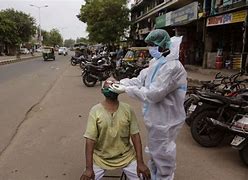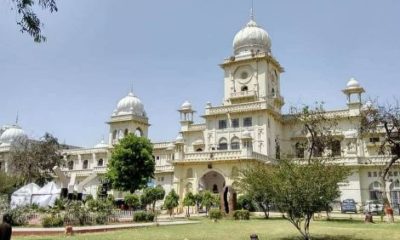Feature
Banking, insurance operations hit as employees strike work

Chennai/New Delhi: Financial services were hit on Wednesday as lakhs of bank and insurance employees across the country began a one-day strike to protest against the anti-trade union and worker policies of the central government.
“The strike has begun on an encouraging note across the country as per the initial information. Employees of the Reserve Bank of India (RBI), nationalised banks, old private sector banks, cooperative banks, regional rural banks are participating in the strike,” All India Bank Employees’ Association (AIEBA) general secretary C.H. Venkatachalam told.
According to him, strike is a success in major cities like Mumbai, Delhi, Chennai and Kolkata.
Across the country, around 500,000 bankers – workers and officers – would be participating in the strike. Around 75,000 branches will not function.
Unions in State Bank of India (SBI) and Indian Overseas Bank (IOB) are not participating in the strike.
“All the major recognised unions representing Class III and IV employees in Life Insurance Corporation of India (LIC) and four government owned non-life insurers are participating in the strike,” J. Gurumurthy, vice president, All India Insurance Employees Association (AIIEA) told.
Some 100,000 LIC workers are estimated to be on strike.
Unions in the non-life insurance sector are demanding early conclusion of wage negotiations, finalisation of the promotion policy and scrapping of outsourcing, among other demands.
Transport unions in the country are also striking work over the proposed Road Transport and Safety Bill.
“All 52 regional rural banks apart from district banks joined the strike,” Venkatachalam said.
“Besides, employees of other important banks like IDBI, Nabard too have joined the strike,” he said.
“Except the State Bank of India and Indian Overseas Bank, all other banks have joined the strike. Kotak Bank is on strike,” the AIEBA general secretary added.
The strike was called in support of the 12-point charter of demands of the 10 central trade unions. Fourteen unions in the banking sector too have given a call for the strike, protesting against the NDA government’s proposed bills amending labour laws, the Contract Act, the Electricity Act and Factory Act.
The unions in the banking and insurance sectors are participating in the strike in support of the 12-point charter as well as other pressing issues in their sectors.
Complaining of increasing attacks on the rights and privileges of workers and concessions extended to the employers, Venkatachalam said there are open attempts to amend labour laws in favour of the employers and to the detriment of the workers.
The neo-liberal economic policies are only aggravating the problems of the workers and common masses, he said.
Venkatachalam said in the banking sector, there are continuous attempts to push through the reforms agenda aimed at privatisation of banks, consolidation and merger of banks and others.
“More and more private capital and foreign direct investments are being encouraged. Private sector companies are being given licences to begin banking business,” he said.
According to him, Regional Rural Banks are sought to be privatised and a bill has been passed in parliament despite protests from employee unions.
The real problem of increasing bad loans is not being effectively handled by the government but on the other hand, crore of rupees are being written off from profits of banks, Venkatachalam said.
“Deliberate and willful default of bank loans should be termed a criminal offence and money recovered but no action is being taken on them,” he added.
“As on March 31, 2015, there are 7,035 cases of willful defaulters involving bad loans of Rs.58,792 crore.
“The bad loans in the banks as on March 31, 2015, has risen to Rs.2,97,000 crore in addition to another Rs.4,03,004 crore of bad loans of 530 corporate companies shown as rescheduled and restructured loans under CDR (corporate debt restructuring) scheme,” Venkatachalam said.
According to him, bad loans struck up in top 30 borrowal accounts of public sector banks as on March 31, 2015, is Rs.1,21,162 crore.
“More and more private capital and foreign direct investments are being encouraged. Private sector companies are being given licences to begin banking business,” he said.
Entertainment
Meghalaya Reserves Legalized Gambling and Sports Betting for Tourists

The State Scores Extra High on Gaming-Friendly Industry Index
Meghalaya scored 92.85 out of 100 possible points in a Gaming Industry Index and proved to be India’s most gaming-friendly state following its recent profound legislation changes over the field allowing land-based and online gaming, including games of chance, under a licensing regime.
The index by the UK India Business Council (UKIBC) uses a scale of 0 to 100 to measure the level of legalisation on gambling and betting achieved by a state based on the scores over a set of seven different games – lottery, horse racing, betting on sports, poker, rummy, casino and fantasy sports
Starting from February last year, Meghalaya became the third state in India’s northeast to legalise gambling and betting after Sikkim and Nagaland. After consultations with the UKIBC, the state proceeded with the adoption of the Meghalaya Regulation of Gaming Act, 2021 and the nullification of the Meghalaya Prevention of Gambling Act, 1970. Subsequently in December, the Meghalaya Regulation of Gaming Rules, 2021 were notified and came into force.
All for the Tourists
The move to legalise and license various forms of offline and online betting and gambling in Meghalaya is aimed at boosting tourism and creating jobs, and altogether raising taxation revenues for the northeastern state. At the same time, the opportunities to bet and gamble legally will be reserved only for tourists and visitors.
“We came out with a Gaming Act and subsequently framed the Regulation of Gaming Rules, 2021. The government will accordingly issue licenses to operate games of skill and chance, both online and offline,” said James P. K. Sangma, Meghalaya State Law and Taxation Minister speaking in the capital city of Shillong. “But the legalized gambling and gaming will only be for tourists and not residents of Meghalaya,” he continued.
To be allowed to play, tourists and people visiting the state for work or business purposes will have to prove their non-resident status by presenting appropriate documents, in a process similar to a bank KYC (Know Your Customer) procedure.
Meghalaya Reaches Out to a Vast Market
With 140 millions of people in India estimated to bet regularly on sports, and a total of 370 million desi bettors around prominent sporting events, as per data from one of the latest reports by Esse N Videri, Meghalaya is set to reach out and take a piece of a vast market.
Estimates on the financial value of India’s sports betting market, combined across all types of offline channels and online sports and cricket predictions and betting platforms, speak about amounts between $130 and $150 billion (roughly between ₹9.7 and ₹11.5 lakh crore).
Andhra Pradesh, Telangana and Delhi are shown to deliver the highest number of bettors and Meghalaya can count on substantial tourists flow from their betting circles. The sports betting communities of Karnataka, Maharashtra, Uttar Pradesh and Haryana are also not to be underestimated.
Among the sports, cricket is most popular, registering 68 percent of the total bet count analyzed by Esse N Videri. Football takes second position with 11 percent of the bets, followed by betting on FIFA at 7 percent and on eCricket at 5 percent. The last position in the Top 5 of popular sports for betting in India is taken by tennis with 3 percent of the bet count.
Local Citizens will Still have Their Teer Betting
Meghalaya residents will still be permitted to participate in teer betting over arrow-shooting results. Teer is a traditional method of gambling, somewhat similar to a lottery draw, and held under the rules of the Meghalaya Regulation of the Game of Arrow Shooting and the Sale of Teer Tickets Act, 2018.
Teer includes bettors wagering on the number of arrows that reach the target which is placed about 50 meters away from a team of 20 archers positioned in a semicircle.
The archers shoot volleys of arrows at the target for ten minutes, and players place their bets choosing a number between 0 and 99 trying to guess the last two digits of the number of arrows that successfully pierce the target.
If, for example, the number of hits is 256, anyone who has bet on 56 wins an amount eight times bigger than their wager.





















